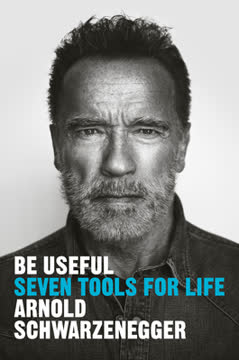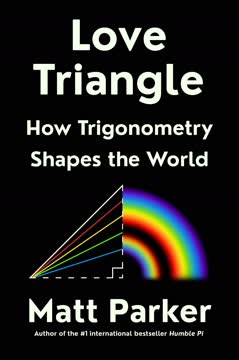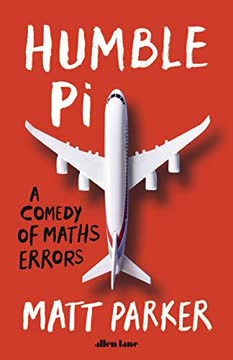Key Takeaways
1. Making is Creation: Follow Your Obsessions
Obsession is the gravity of making.
Creation is fundamental. Making is a new name for the ancient human drive to create, encompassing diverse activities from building to cooking to writing. It's about bringing something new into the world, contributing to culture, and expressing oneself through hands, words, or actions. Everyone has the capacity to be a maker.
Follow secret thrills. Ideas often stem from deep curiosity and fascination—what the author calls "secret thrills." These interests, whether in Star Wars, architecture, or mechanical computers, pull you down rabbit holes of exploration. Nurturing these passions, even if they feel weird or vulnerable to share, is the engine of creativity and the source of great ideas.
Obsession fuels excellence. Bringing anything significant into existence requires a degree of obsession. This intense focus moves projects forward, binds ideas together, and provides structure. Managing your obsessions, rather than dismissing them, is crucial for transforming passion into tangible creations and achieving excellence.
2. Embrace Planning: Lists Are Your Friend
if lists do anything, they give rhyme and reason to any project, big or small.
Lists tame complexity. Initially seen as creativity killers, lists are actually intrinsic to any project of scale. They organize chaotic thoughts, catalog necessary components, and provide a clear overview of the work ahead. This frees up mental energy for creative problem-solving rather than trying to remember everything.
Methodical process. The author's list-making evolves from a chaotic "brain dump" to a structured, multi-level outline. This involves breaking down the project into big chunks, then medium chunks, and finally detailed itemized tasks. This process clarifies the project's scope and scale, making it feel manageable.
Lists are dynamic. Planning isn't a one-time event; lists evolve throughout the project. As new problems arise or details change, more lists are created to tackle solutions and incorporate new information. This fractal nature of lists helps navigate the ever-changing landscape of a complex build.
3. Build Momentum: Use Checkboxes and Deadlines
Deadlines are the chain saw that prunes decision trees.
Checkboxes track progress. Adding checkboxes to lists provides a visual representation of momentum. Filling in boxes for completed or partially completed tasks offers a tangible sense of forward movement, which is crucial for staying motivated, especially during tedious or challenging phases. This visual feedback acts as a personal propaganda machine for progress.
Deadlines clarify focus. Deadlines are powerful productivity tools that force decision-making and focus effort. They eliminate the paralysis of too many options and push projects toward completion. Rather than viewing them as restrictive, embrace deadlines as sieves that filter out non-essential elements, leaving only what truly matters for the project's core purpose.
Embrace the pressure. Working under pressure, like on commercial film sets, teaches you to prioritize and find solutions quickly. Understanding the ultimate goal of the project helps clarify what needs to be done. Knowing that missing a deadline isn't the end of the world can reduce anxiety and allow you to channel stress into focused productivity.
4. Slow Down to Go Faster: Address Your Work
My sin, as a builder, has always been one of impatience.
Impatience causes mistakes. A natural impulse to finish quickly often leads to errors, rework, and wasted time and materials. This "stitch in time saves nine" principle is hard-won wisdom gained through countless self-inflicted injuries and ruined parts caused by rushing. Slowing down is counterintuitive but ultimately more efficient.
Address your work properly. This means orienting yourself physically and mentally for the task, taking the time to organize your space, tools, and thoughts. It involves securing your work (like clamping) and using necessary aids (like cooling fluid when cutting metal) to ensure precision and prevent tool or material failure. Proper preparation saves significant time in the long run.
Knolling and mise en place. Organizing your workspace by grouping and aligning items ("knolling") or preparing all components before starting ("mise en place") are powerful methods for addressing your work. These practices, borrowed from artists and chefs, reduce lost time searching for things, increase working space, and allow you to take stock of what you have, leading to greater efficiency and less stress.
5. Collaboration is Key: Ask for and Give Help
having the patience and humility to ask for help is a critical element in the successful execution of any project.
Don't be a hero. Trying to do everything yourself, especially on complex projects for others, is inefficient and can lead to failure. Asking for help is not a sign of weakness but a necessary step for growth and successful execution. It allows you to leverage others' expertise and learn new skills.
Help is expertise. Asking for help is fundamentally about collaboration and learning. It connects you with wisdom and experience you don't possess, deepening your skill set. The smartest people are often the quickest to ask questions and seek understanding, demonstrating that humility is key to continuous improvement.
Acknowledge contributions. Giving credit and appreciation to collaborators is vital, especially as a leader. Providing feedback—from gratitude and encouragement to constructive criticism and course correction—is an investment in your team and fosters a positive collaborative environment. Recognizing others' efforts strengthens the collective and acknowledges that great things are rarely built alone.
6. Drawing is the Universal Language of Making
Drawing is, I have come to appreciate, a fundamental act of creation.
Translate ideas visually. Drawing is a powerful tool for transferring complex ideas from your mind to the physical world, bridging the gap where words fail. It allows you to flesh out concepts, work out kinks, refine details, and experiment with designs before committing to fabrication. The quality of the drawing is less important than its ability to capture intention and facilitate understanding.
Drawing builds momentum. When facing creative blocks or confusion, drawing provides a new vantage point on the project. Sketching different aspects, details, or even related components can unlock solutions and create forward movement. It keeps the project at the forefront of your mind and helps you mull over parts and pieces, fighting inertia.
Communicate and ideate. Drawing is an essential communication tool, especially when collaborating with others who may not share your mental shorthand. It ensures everyone is on the same page and facilitates discussion. Additionally, drawing completed projects or variations can spark new ideas and deepen your understanding of what you've built, serving as a fertile ground for future creations.
7. Iteration, Not Failure: Increase Your Mistake Tolerance
Screwing up IS learning.
Creation is iterative. Making is a process of experimentation and iteration, not a straight line to perfection. "Wrong turns" and unexpected results are inherent to the journey. What is often called "failure" in creative contexts is simply trying things that don't work in the pursuit of finding what does.
Build mistake tolerance. It's crucial to give yourself permission and space to mess up. This "mistake tolerance" allows for experimentation without catastrophic consequences. Using inexpensive materials for prototyping or buying extra supplies provides a cushion for errors, reducing stress and encouraging exploration of new techniques.
Learn by doing (and redoing). Skills are best learned by applying them, often through repeated attempts and corrections. Embracing the process of screwing up and fixing it builds empirical knowledge and intuition. Over time, this iterative experience develops an instinct for when a project requires close precision versus when it allows for looser tolerances.
8. Choose Your Materials Wisely: Cardboard is King
In my realm, cardboard is king and the gateway drug to making.
Cardboard's versatility. Cardboard is an ideal material for early exploration and prototyping due to its low cost, accessibility, and ease of use. It's rigid yet easy to cut and join with various adhesives and fasteners, making it an excellent training ground for fundamental making skills like joining planar forms.
Risk-free prototyping. Cardboard allows you to quickly build mock-ups to test designs, sizes, shapes, and scales in the real world before committing to more expensive materials. This intermediate stage between conception and final fabrication helps identify potential problems early and refine ideas without significant investment or risk.
Gateway to other skills. Working with cardboard teaches basic principles applicable to diverse crafts like carpentry, sewing, and welding. Understanding how to manipulate and join cardboard translates directly to working with wood, fabric, or sheet metal. It provides meaningful experience and endless creative possibility, serving as a foundation for a lifetime of making.
9. Tools Are Extensions of Yourself: Learn and Diversify
in every tool, there is a hammer.
Tools facilitate creation. Tools are fundamental to human endeavor, extending our hands and minds to shape the world. Building a tool collection is a personal journey, reflecting your evolving skills, needs, and preferences. The best tool is the one you are most comfortable with and understand intimately.
Start cheap, then upgrade. When exploring new tools or techniques, begin with the cheapest version available. This allows you to learn the tool's physical properties and how it fits into your workflow without significant financial risk. If it proves indispensable, invest in a higher-quality version, knowing exactly what features matter most to you.
Diversify for specific tasks. As your experience grows, you'll discover the need for specialized tools designed for specific materials or operations. While a basic set is essential, diversifying your collection with different styles or varieties of tools allows for greater precision, efficiency, and the ability to tackle a wider range of projects effectively.
10. Organize Your Space: See and Reach Everything
A shop is a meta-level tool for telling our stories.
Shop reflects philosophy. A workshop is more than just a storage space; it's a physical manifestation of a maker's organizational beliefs, work habits, and priorities. Its layout and structure reflect how you think about projects and interact with your materials and tools. Understanding this connection helps refine your process.
Visibility and accessibility. The author's core organizational principles are "seeing everything easily" and "reaching everything easily." This involves keeping tools and materials visible rather than hidden in drawers, allowing for quick identification and retrieval. This "visual cacophony" is carefully arranged to support a fast, stream-of-consciousness working style.
First-order retrievability. This principle emphasizes arranging tools and materials so they can be accessed directly without moving other items. While challenging in limited spaces, prioritizing frequently used items and having multiple sets of essential tools placed strategically throughout the shop saves time and increases efficiency, supporting a fluid workflow.
11. Share Everything: Knowledge, Credit, and Vision
In my experience, the more you give away, the richer you will be (to paraphrase Paul McCartney).
Sharing fuels progress. Sharing knowledge, methodologies, and enthusiasm is essential for the growth of the making community and human progress. Overcoming the fear that sharing incurs a cost, the author believes generosity with information leads to greater personal and collective enrichment.
Share your work and credit. Talking about your projects and showing tangible evidence of your skills is crucial for finding opportunities, collaborators, and building a reputation. Just as important is giving credit to those who helped you, acknowledging that great achievements are almost always the result of collective effort and standing on the shoulders of others.
Share your vision. Collaborating effectively requires sharing not just ideas but the underlying vision for a project. Clearly communicating your dream scenario and defining roles allows collaborators to contribute their unique genius within a shared framework. This fosters engagement and ensures everyone is working toward a common, inspiring goal.
Last updated:
Review Summary
Every Tool's a Hammer receives mostly positive reviews, with readers praising Savage's enthusiasm, practical advice, and insights into the creative process. Many find it inspiring for makers and creatives of all types. The book blends memoir, philosophy, and practical tips, though some wished for more Mythbusters stories. Readers appreciate Savage's down-to-earth approach and permission to embrace one's interests. Critical reviews mention repetition, privilege, and sections that may not appeal to all readers. Overall, it's seen as motivational for makers and fans of Savage's work.
Similar Books






Download PDF
Download EPUB
.epub digital book format is ideal for reading ebooks on phones, tablets, and e-readers.




